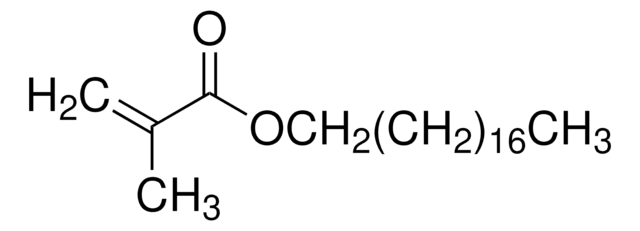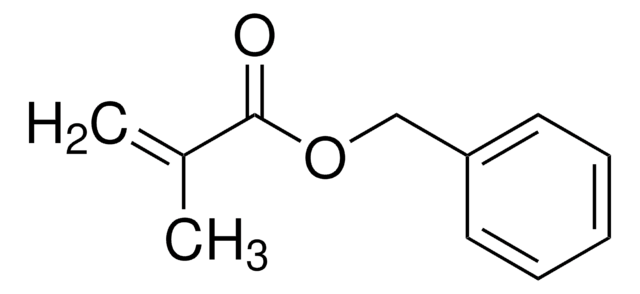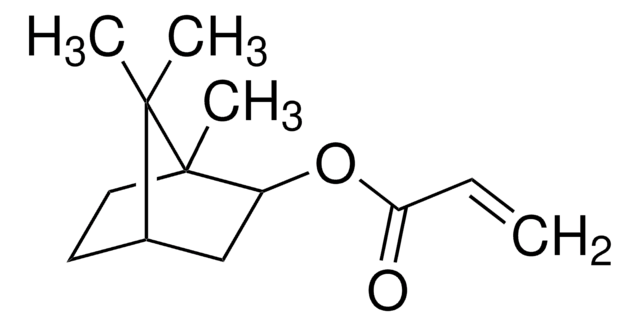291811
Lauryl methacrylate
contains 500 ppm MEHQ as inhibitor, 96%
Sinonimo/i:
Dodecyl 2-methyl-2-propenoate, Dodecyl methacrylate
About This Item
Prodotti consigliati
Livello qualitativo
Saggio
96%
contiene
500 ppm MEHQ as inhibitor
Indice di rifrazione
n20/D 1.445 (lit.)
P. ebollizione
142 °C/4 mmHg (lit.)
Punto di fusione
−7 °C (lit.)
Densità
0.868 g/mL at 25 °C (lit.)
Stringa SMILE
CCCCCCCCCCCCOC(=O)C(C)=C
InChI
1S/C16H30O2/c1-4-5-6-7-8-9-10-11-12-13-14-18-16(17)15(2)3/h2,4-14H2,1,3H3
GMSCBRSQMRDRCD-UHFFFAOYSA-N
Cerchi prodotti simili? Visita Guida al confronto tra prodotti
Categorie correlate
Descrizione generale
Applicazioni
- To prepare polymeric co-stabilizer by free-radical copolymerization.
- To fabricate fluorine-less superhydrophobic cotton fabrics via graft polymerization process.
- In the synthesis of prepolymers that are used in oil absorbents.
Avvertenze
Warning
Indicazioni di pericolo
Consigli di prudenza
Classi di pericolo
Aquatic Acute 1 - Aquatic Chronic 1 - Eye Irrit. 2 - Skin Irrit. 2 - STOT SE 3
Organi bersaglio
Respiratory system
Codice della classe di stoccaggio
10 - Combustible liquids
Classe di pericolosità dell'acqua (WGK)
WGK 1
Punto d’infiammabilità (°F)
224.6 °F - closed cup
Punto d’infiammabilità (°C)
107 °C - closed cup
Dispositivi di protezione individuale
Eyeshields, Gloves, type ABEK (EN14387) respirator filter
Scegli una delle versioni più recenti:
Possiedi già questo prodotto?
I documenti relativi ai prodotti acquistati recentemente sono disponibili nell’Archivio dei documenti.
I clienti hanno visto anche
Global Trade Item Number
| SKU | GTIN |
|---|---|
| 291811-100ML | 4061826594308 |
| 291811-500ML | 4061837404917 |
| 291811-1ML | |
| 291811-5ML |
Il team dei nostri ricercatori vanta grande esperienza in tutte le aree della ricerca quali Life Science, scienza dei materiali, sintesi chimica, cromatografia, discipline analitiche, ecc..
Contatta l'Assistenza Tecnica.











